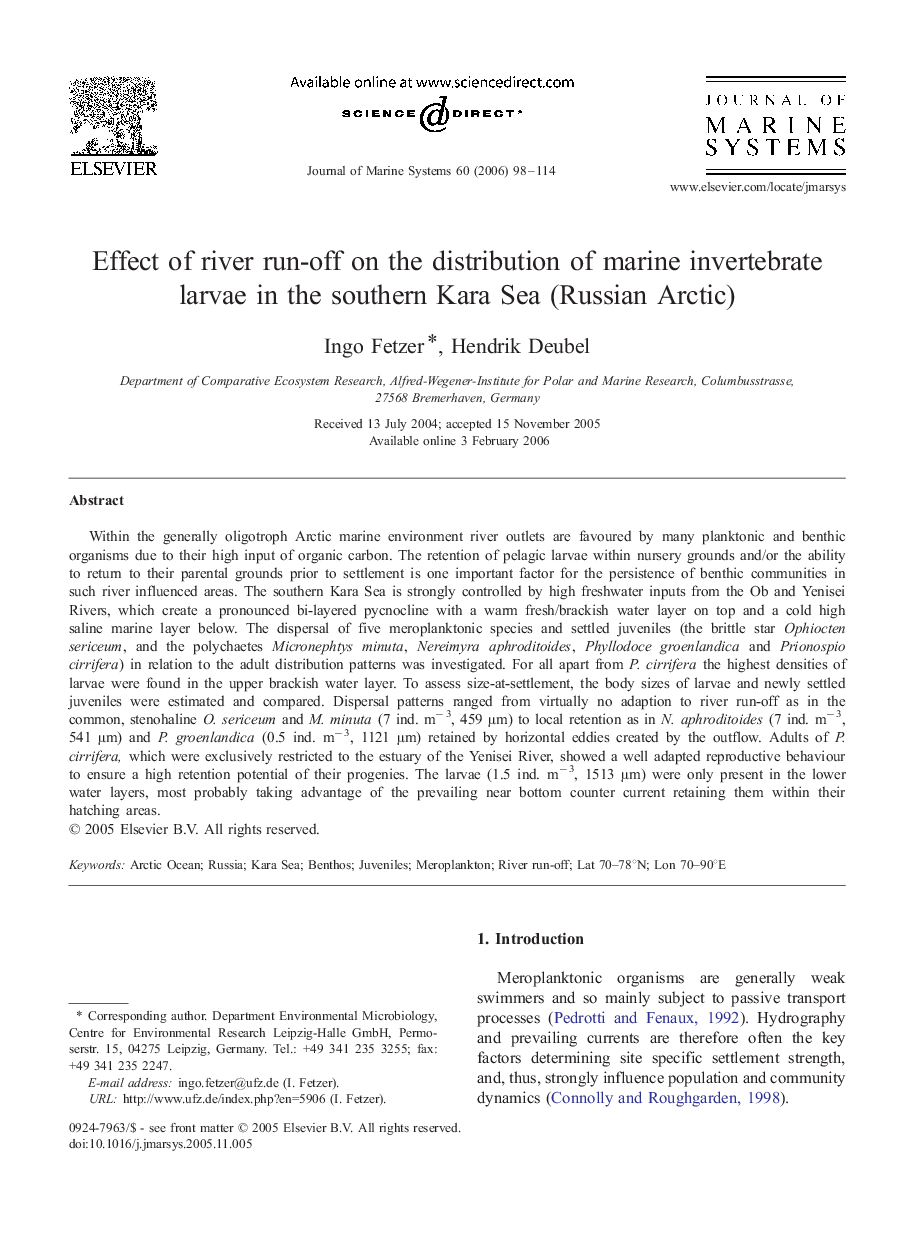| کد مقاله | کد نشریه | سال انتشار | مقاله انگلیسی | نسخه تمام متن |
|---|---|---|---|---|
| 4549457 | 1627367 | 2006 | 17 صفحه PDF | دانلود رایگان |

Within the generally oligotroph Arctic marine environment river outlets are favoured by many planktonic and benthic organisms due to their high input of organic carbon. The retention of pelagic larvae within nursery grounds and/or the ability to return to their parental grounds prior to settlement is one important factor for the persistence of benthic communities in such river influenced areas. The southern Kara Sea is strongly controlled by high freshwater inputs from the Ob and Yenisei Rivers, which create a pronounced bi-layered pycnocline with a warm fresh/brackish water layer on top and a cold high saline marine layer below. The dispersal of five meroplanktonic species and settled juveniles (the brittle star Ophiocten sericeum, and the polychaetes Micronephtys minuta, Nereimyra aphroditoides, Phyllodoce groenlandica and Prionospio cirrifera) in relation to the adult distribution patterns was investigated. For all apart from P. cirrifera the highest densities of larvae were found in the upper brackish water layer. To assess size-at-settlement, the body sizes of larvae and newly settled juveniles were estimated and compared. Dispersal patterns ranged from virtually no adaption to river run-off as in the common, stenohaline O. sericeum and M. minuta (7 ind. m− 3, 459 μm) to local retention as in N. aphroditoides (7 ind. m− 3, 541 μm) and P. groenlandica (0.5 ind. m− 3, 1121 μm) retained by horizontal eddies created by the outflow. Adults of P. cirrifera, which were exclusively restricted to the estuary of the Yenisei River, showed a well adapted reproductive behaviour to ensure a high retention potential of their progenies. The larvae (1.5 ind. m− 3, 1513 μm) were only present in the lower water layers, most probably taking advantage of the prevailing near bottom counter current retaining them within their hatching areas.
Journal: Journal of Marine Systems - Volume 60, Issues 1–2, April 2006, Pages 98–114